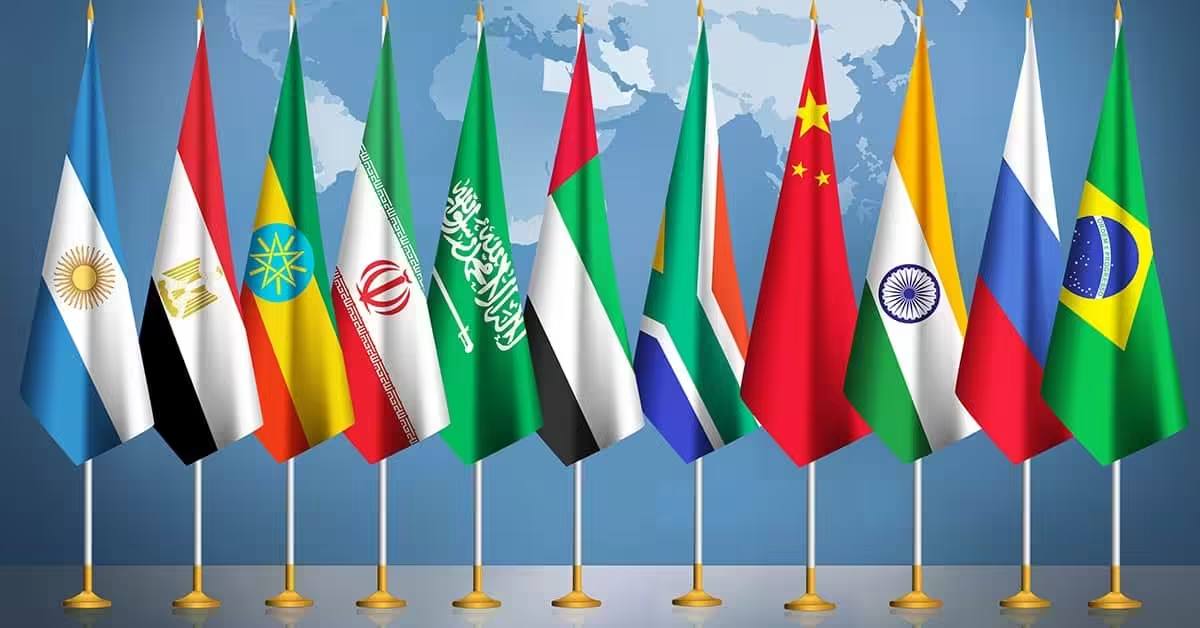|
Getting your Trinity Audio player ready...
|
The BRICS bloc’s strategy to sideline the U.S. dollar in favor of national currencies is yielding tangible results. The group—comprising Brazil, Russia, India, China, South Africa, as well as newer members like Egypt, Ethiopia, Iran, Saudi Arabia, and the United Arab Emirates (UAE)—has been working diligently to organize trade within the bloc using their respective national currencies.
While the extent of these efforts had remained somewhat under wraps, recent remarks have shed light on the progress made. At the “Cloud Cities: Forum on the Future of BRICS Cities” event held in Moscow, Samip Shastri, Deputy Chairman of the BRICS Chamber of Commerce and Industry, provided crucial details on the shift away from the dollar. According to Shastri, settlements in national currencies have now surpassed those made in U.S. dollars, signaling a significant milestone for BRICS.
Economic Advantages Beyond Trade
In his statements, Shastri emphasized that trading in national currencies offers a range of advantages beyond bypassing the dollar. One of the primary benefits is cost reduction. “Using the dollar leads to additional expenses, which are eliminated when I pay directly in rubles or rupees,” Shastri noted. By avoiding currency conversion fees and reliance on dollar-pegged transactions, BRICS countries are streamlining trade and reducing overhead.
This approach also aligns with the broader goals expressed during BRICS’ 15th annual summit in 2023. Leaders pledged to ramp up the use of national currencies in trade, citing it as a critical step toward establishing a “stable global financial architecture.” This stability would shield member nations from the volatility associated with the U.S. dollar and other global financial shocks, allowing for more predictable trade and economic planning.
Eyeing Digital Currency Integration
In a significant forward-looking move, Shastri also revealed that the BRICS bloc is exploring the use of digital currencies for trade settlements. While no formal announcements have been made, the possibility of integrating digital currencies into BRICS transactions could further enhance trade efficiency. Digital currencies offer instant, borderless transactions and could help member nations bypass international banking systems that remain heavily reliant on the U.S. dollar.
This consideration is especially relevant as global interest in central bank digital currencies (CBDCs) and decentralized digital assets continues to grow. Should BRICS adopt digital currencies for trade, it could further undermine the dollar’s dominance in international markets.
A Bold Shift in Global Trade Dynamics
The move to national currencies is more than just an economic strategy for BRICS—it’s a geopolitical one. Reducing reliance on the U.S. dollar allows member countries to diminish the influence of Western financial institutions and sanctions, which have often been used to exert pressure on governments. For example, Russia and Iran, both of whom are part of BRICS, have been targets of U.S. sanctions that rely on the global dollar-based financial system.
Also Read: JPMorgan’s Jamie Dimon Warns – 70% Chance Of U.S. Stagflation Amid Rising BRICS Influence
By shifting to national currencies, BRICS is creating a parallel financial ecosystem that could protect its members from economic coercion and contribute to the rise of a multipolar world. The implications of this shift extend far beyond the bloc, as other emerging economies may be inspired to follow suit.
BRICS’ de-dollarization strategy is proving successful, with settlements in national currencies now overtaking dollar-based exchanges. Beyond reducing costs, this move is reshaping the global financial landscape and signaling the potential decline of the U.S. dollar’s hegemony. As BRICS continues to explore the integration of digital currencies, its strategy may serve as a blueprint for other nations seeking financial independence.
Disclaimer: The information in this article is for general purposes only and does not constitute financial advice. The author’s views are personal and may not reflect the views of Chain Affairs. Before making any investment decisions, you should always conduct your own research. Chain Affairs is not responsible for any financial losses.
Crypto and blockchain enthusiast.




